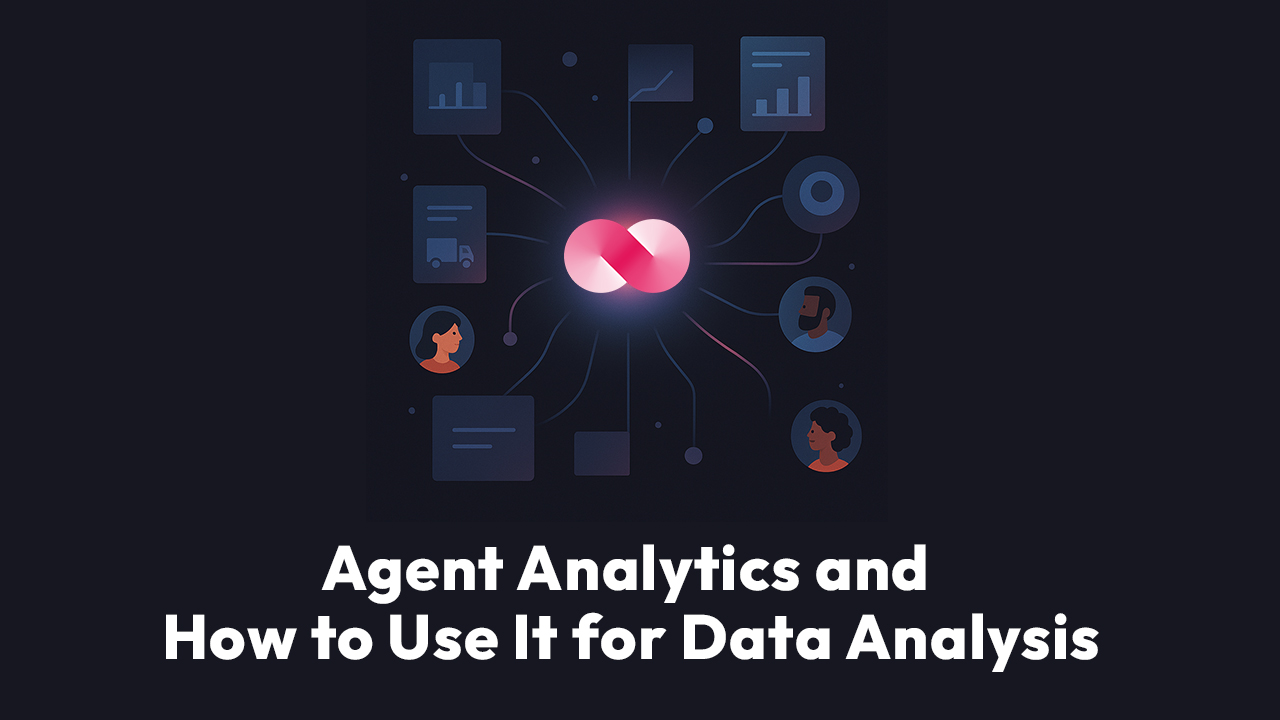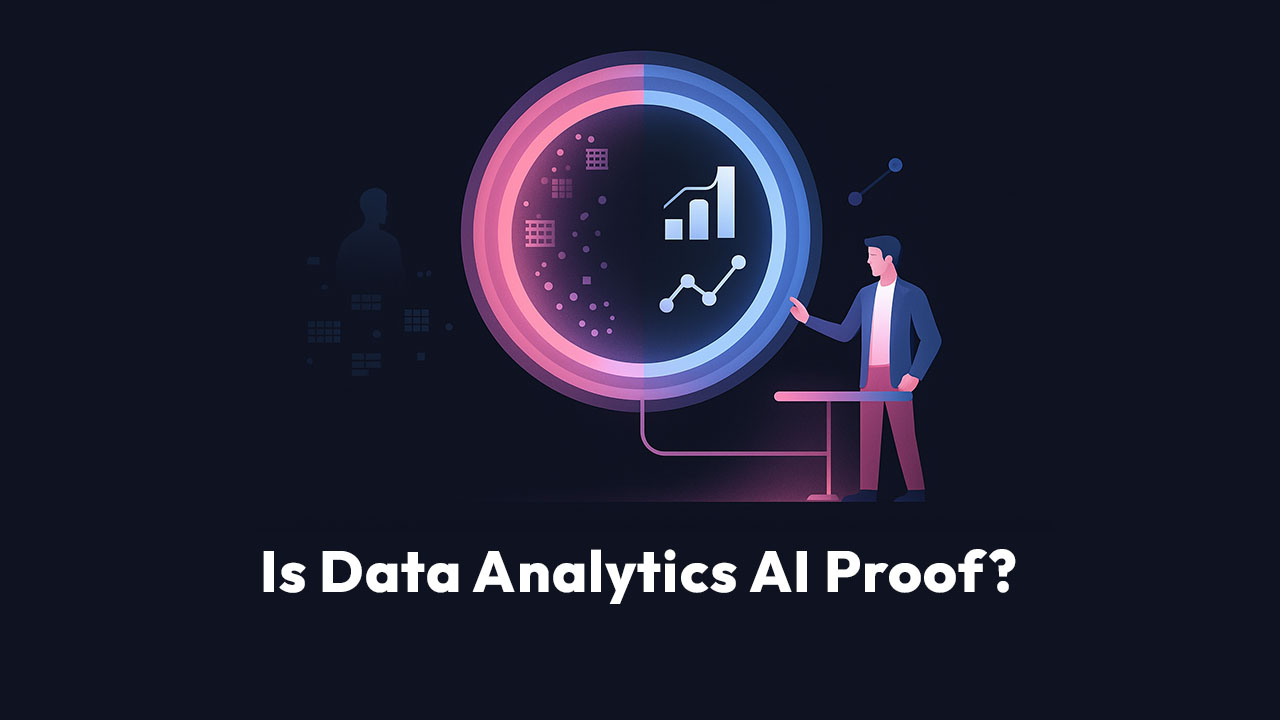Agent Analytics and Scoop Analytics
Agent analytics transforms business operations by acting as an autonomous AI investigator that doesn't just answer your questions—it systematically explores multiple hypotheses, tests theories, and uncovers root causes in 45 seconds. Unlike traditional BI tools that show you what happened, agent analytics in Scoop discovers why it happened and what you should do about it.
Here's what most operations leaders miss: you're not drowning in data because you lack dashboards. You're drowning because every question spawns ten more, and each one requires hours of manual investigation.
Traditional analytics tools give you a fishing rod.
Agent analytics gives you a team of expert fishermen who know where the fish are hiding.
Let me show you exactly how this changes everything.
What Is Agent Analytics and Why Should Operations Leaders Care?
Agent analytics represents a fundamental shift in how businesses interact with data.
Instead of responding to individual queries like a traditional chatbot, an agent analytics system acts as an autonomous investigator—formulating hypotheses, executing coordinated analyses, and synthesizing findings into actionable intelligence.
Think about the last time you asked your analytics team, "Why did our operational efficiency drop last month?"
What happened next?
They probably spent three hours pulling data from five different systems, created a dozen pivot tables, tested theories one by one, and still gave you a guess: "We think it might be the new shipping process, but we're not sure."
Now imagine asking that same question and getting this response in 45 seconds:
"Operational efficiency dropped 12% due to three interconnected factors: warehouse zone C experienced a 340% increase in misrouted items after the shelf reorganization; this caused downstream delays in quality checks (identified through correlation analysis of timestamp data); and the impact was amplified by understaffing on Tuesday/Thursday shifts. Fixing zone C routing will recover 73% of the lost efficiency. Here's the specific action plan..."
That's agent analytics.
Not a single chart.
Not a basic answer.
A complete investigation with multiple coordinated analyses running in parallel, connecting dots humans can't see, and delivering recommendations you can act on immediately.
Why operations leaders need this capability right now:
Your competitors aren't waiting three hours for answers anymore. The operations teams winning in 2025 are the ones making faster, better-informed decisions. When you can identify process bottlenecks in 45 seconds instead of three days, you're not just more efficient—you're playing a different game entirely.
How Agent Analytics Differs from Traditional BI Tools
Let's get brutally honest about traditional business intelligence tools.
Your current BI platform shows you what happened.
Maybe it's a beautiful dashboard with stunning visualizations.
But when something changes—when efficiency drops or costs spike or customer complaints increase—those dashboards just stare back at you, offering no explanation.
Traditional BI: The Single-Query Limitation
Ask Power BI or Tableau, "Why did revenue drop?" and you'll get... a chart showing revenue dropped.
Groundbreaking, right? You knew that already.
The tool did exactly what it was designed to do: execute one query and display the result.
Want to investigate further? That's on you.
Open another tab, run another query, build another chart. Repeat twenty times. Spend three hours. Maybe find the answer.
Agent Analytics: Multi-Hypothesis Investigation
Ask Scoop's agent analytics the same question, and watch what happens behind the scenes:
The system immediately formulates eight different hypotheses:
- Did seasonal patterns shift?
- Were specific customer segments affected?
- Did product mix change?
- Were there regional variations?
- Did operational issues impact sales?
- Were there competitive pressures?
- Did pricing changes have unintended effects?
- Were there data quality issues skewing results?
Then it tests all eight simultaneously. In parallel. Within 45 seconds.
It discovers that mobile checkout failures increased 340%, identifies the specific payment gateway error, calculates the exact impact ($430K lost revenue), determines which customer segments were most affected, and provides the fix recommendation along with a recovery timeline.
Have you ever wondered why your analytics team seems perpetually overwhelmed? This is why. They're doing manually what agent analytics does automatically.
The Three-Layer Intelligence Behind Scoop's Agent Analytics
Here's where most "AI-powered" analytics tools fall apart.
They slap a chatbot on top of a traditional database and call it innovation.
That's like putting a fancy steering wheel on a horse-drawn carriage and claiming you've invented the automobile.
Scoop's agent analytics works differently because of its three-layer architecture. Each layer serves a specific purpose, and together they deliver something no competitor can match: PhD-level data science explained in language your team actually understands.
Layer 1: The Invisible Foundation—Automatic Data Preparation
Before any analysis happens, Layer 1 works behind the scenes doing what would normally require a data scientist:
- Cleaning data (handling missing values, fixing inconsistencies)
- Smart binning (converting continuous variables into meaningful categories)
- Feature engineering (creating new variables that reveal patterns)
- Normalization (ensuring fair comparisons across different scales)
- Detecting and handling outliers
You never see this happen.
It just works.
Your operations manager uploads a messy spreadsheet with incomplete data, inconsistent formatting, and obvious errors—and the system handles it automatically.
Why this matters: In traditional analytics, data preparation consumes 60-80% of analysis time. Layer 1 eliminates that bottleneck entirely. Your team focuses on decisions, not data cleaning.
Layer 2: The Powerhouse—Real Machine Learning Execution
This is where the actual data science happens.
Scoop runs sophisticated algorithms from the Weka machine learning library—the same algorithms used in academic research and enterprise data science:
- J48 Decision Trees that can be 800+ nodes deep, testing dozens of variables simultaneously
- JRip Rule Learning that discovers if-then patterns across your entire dataset
- EM Clustering that finds natural groupings you never knew existed
These aren't toy algorithms.
They're production-grade machine learning that would normally require a team of data scientists to implement, tune, and interpret.
Here's the problem: these algorithms produce complex output. A J48 decision tree with 847 nodes showing every possible decision path. Hundreds of rules with coverage statistics. Probability distributions and confidence intervals.
It's explainable in theory—you can trace every decision the algorithm made. But in practice? No operations leader wants to wade through an 800-node tree to understand why warehouse efficiency is declining.
Layer 3: The Translator—Business Language Explanations
This is Scoop's secret weapon. Layer 3 takes that complex 800-node decision tree and translates it into something like this:
"Three factors predict operational delays with 89% accuracy: 1. Orders over 15 items (delays increase 3.4×) 2. Combined with zone C processing (adds 27 minutes average) 3. During afternoon shifts (compounds the issue) Immediate action: Reroute large orders away from zone C between 2-6pm. Expected impact: 67% reduction in delays."
See the difference? You get sophisticated machine learning analysis—the kind that costs $250K+ to hire a data scientist for—explained like a consultant would explain it.
The result: Your operations team gets the analytical power of a PhD data scientist with the clarity of a business consultant, delivered in 45 seconds.
How to Use Agent Analytics for Common Operations Challenges
Let's get practical.
Here's how agent analytics solves real problems operations leaders face every single day.
Process Bottleneck Investigation
The traditional approach: Your fulfillment process is running 20% slower than last quarter. You know this from your dashboard. But why? Your team spends two days analyzing each process step, interviewing staff, reviewing logs, and building hypotheses manually.
The agent analytics approach:
Ask in Slack: "Why is fulfillment slower this quarter?"
Watch Scoop's agent analytics investigate:
- Analyzes processing times by step across 47,000 orders
- Identifies that quality control is the bottleneck (not picking or packing)
- Discovers the slowdown correlates with new inspection requirements
- Finds specific product categories causing the delays
- Calculates that temporary inspectors are 40% slower than trained staff
- Estimates that focused training will recover 83% of lost efficiency
Time elapsed: 45 seconds. Action plan: clear. Decision: immediate.
Resource Allocation Optimization
You're managing multiple warehouses, distribution centers, and fulfillment operations. How do you know where to allocate your next hiring budget?
Traditional analysis: Pull utilization reports. Calculate cost per unit. Build spreadsheets. Make educated guesses. Hope you're right.
Agent analytics investigation:
"Find opportunities to improve resource allocation across our operations."
The system:
- Analyzes productivity patterns across all facilities
- Discovers that Atlanta warehouse has 15% better efficiency on Tuesday-Thursday
- Identifies that this correlates with specific team composition
- Finds that warehouses with 60/40 permanent-to-temporary staff ratios outperform others
- Calculates the financial impact of replicating this ratio elsewhere
- Provides a phased implementation plan with expected ROI
You just got a strategic operations improvement plan that would normally require weeks of consulting work.
Vendor Performance Analysis
You work with dozens of suppliers. Some are great. Some cause problems. But which problems are actually costing you money, and how much?
Ask: "Which vendor issues are impacting our operations the most?"
Agent analytics runs parallel investigations:
- Quality defect rates by vendor
- Delivery timing accuracy and impact
- Cost variations and trends
- Correlation with downstream operational issues
- Impact on customer satisfaction
- Financial quantification of each issue
It discovers that Vendor A's 2% higher defect rate is actually costing you $340K annually through downstream rework and customer issues—far more than the 5% price premium Vendor B charges for better quality.
Predictive Maintenance Optimization
Equipment downtime destroys operational efficiency. But most maintenance is either reactive (too late) or scheduled (too frequent).
"Predict which equipment needs maintenance in the next 30 days."
The agent analytics system:
- Analyzes failure patterns across equipment history
- Identifies leading indicators (vibration data, temperature fluctuations, usage patterns)
- Builds predictive models with 87% accuracy
- Prioritizes interventions by criticality and cost
- Generates maintenance schedules optimized for minimal disruption
You shift from reactive firefighting to proactive prevention.
What Makes Agent Analytics Actually Work in Practice
Let's talk about what separates agent analytics that works from AI that disappoints.
Real Machine Learning, Not Statistical Parlor Tricks
Many tools claim "AI-powered analytics" but actually run basic statistical aggregations. They calculate averages, maybe run some correlation analysis, and call it machine learning.
Scoop's agent analytics uses actual ML algorithms:
- Decision trees that test dozens of variables simultaneously
- Clustering algorithms that discover hidden patterns across multiple dimensions
- Rule learning systems that find complex relationships
When you ask, "What predicts operational delays?" you're not getting a correlation coefficient. You're getting a decision tree that tested every possible combination of factors and found the specific conditions that predict delays with 89% accuracy.
Schema Evolution: The Hidden Differentiator
Here's something that will save you hundreds of hours and thousands of dollars:
Traditional BI tools break when your data changes. Add a new column to your ERP system? Two weeks of IT work to update the semantic model. Change how you categorize products? Rebuild your entire data warehouse structure.
Agent analytics in Scoop adapts automatically. Add columns, change formats, introduce new data sources—the system handles it instantly. No maintenance windows. No IT tickets. No breaks in service.
Why this matters for operations leaders: Your business changes constantly. New product lines, new fulfillment methods, new vendors, new metrics. Your analytics needs to keep pace. Agent analytics does.
The Context Memory Advantage
Traditional BI treats every question independently. Ask three related questions, and the system has no idea they're connected.
Agent analytics maintains conversation context. It remembers what you're investigating and builds on previous findings:
You: "Why did Zone C efficiency drop?" System: [Investigates and finds root causes]
You: "How does this compare to Zone B?" System: [Already knows you're investigating zone efficiency, immediately provides comparative analysis]
You: "What would fix both issues?" System: [Synthesizes findings from both investigations, provides unified solution]
This feels like working with a brilliant colleague who actually listens and remembers—because that's exactly how it's designed.
Real Results from Real Operations Teams
A multi-warehouse e-commerce fulfillment operation implemented agent analytics to investigate rising operational costs. Within the first week, they:
Discovered: A seemingly minor change in box sizes was causing 23% more dimensional weight charges on shipments.
Quantified: The annual impact: $847K in unnecessary shipping costs.
Solved: Switched to optimized box sizes for specific product categories.
Result: Recovered $623K annually with a one-time $40K investment in new packaging.
The kicker? Their operations manager found this in 45 seconds by asking: "Why are shipping costs increasing faster than volume?"
Traditional analysis would have taken weeks to connect these dots—if they ever connected them at all.
FAQ
How is agent analytics different from regular business intelligence?
Agent analytics investigates questions by testing multiple hypotheses simultaneously, while traditional BI executes single queries and displays results. Think of BI as showing you what happened; agent analytics explains why it happened and what to do about it. The system actively explores your data like an analyst would, rather than passively responding to specific requests.
Do I need technical skills to use agent analytics?
No. If you can ask a question in plain English, you can use agent analytics. The system handles all technical complexity—data preparation, algorithm selection, statistical analysis, and interpretation—automatically. You interact through natural conversation, either in the Scoop interface or directly in Slack.
How long does a typical investigation take?
Quick visualizations appear in 15-30 seconds. Deep investigations with multiple coordinated analyses complete in 45 seconds to 2 minutes. Compare this to traditional analysis that takes hours or days for equivalent depth. The system shows real-time progress updates, so you see exactly what it's investigating.
Can agent analytics work with my existing data sources?
Yes. Scoop connects to 100+ data sources including all major operational systems, ERPs, WMS platforms, databases, and spreadsheets. You can also upload CSV or Excel files directly. The system automatically understands structure and relationships across sources without requiring data modeling or IT configuration.
How accurate are the insights and predictions?
Machine learning models in Scoop typically achieve 85-95% accuracy, with confidence scores displayed for every prediction. More importantly, every finding is explainable—you see exactly why the system reached each conclusion. This transparency lets you validate findings against your operational knowledge and trust recommendations with confidence.
What happens when my data structure changes?
Agent analytics adapts automatically. Unlike traditional BI that breaks when data changes, Scoop handles schema evolution instantly. Add columns, change formats, introduce new data sources—the system adjusts without requiring IT maintenance, semantic model updates, or service interruptions.
Can I share findings with my team?
Absolutely. One-click sharing to Slack channels, email, or exported PowerPoint presentations. Shared insights include the original question, complete analysis, visualizations, and recommendations—everything your team needs to understand and act on findings. Other team members can then ask follow-up questions to explore deeper.
How does pricing work for operations teams?
Scoop costs $299 per user per month—dramatically less than traditional BI platforms that charge $70-$165 per user plus hidden compute costs. No per-query charges, no surprise bills for exploration, no separate fees for machine learning capabilities. Flat, predictable pricing that encourages discovery rather than punishing it.
Why Agent Analytics Changes Operations Management
You're making dozens of operational decisions every week. Each one impacts efficiency, costs, customer satisfaction, and ultimately profitability. The question isn't whether you need better analytics—it's how much longer you can afford to make critical decisions based on incomplete analysis, gut feelings, and educated guesses.
Agent analytics doesn't just give you faster answers. It gives you better questions you didn't know to ask, patterns you couldn't see manually, and recommendations backed by rigorous analysis that previously required a team of data scientists.
The operational leaders winning in 2025 share one characteristic: They make decisions faster and better than their competitors. Not because they work harder, but because they have agent analytics investigating their operations continuously, finding opportunities and identifying problems before they become crises.
Your next step: Stop treating analytics as a reporting function. Start treating it as an operational intelligence system that actively hunts for improvements, automatically investigates anomalies, and continuously optimizes your operations.
The operations team across town implementing agent analytics this week will be making better decisions than you next month. The question is whether you'll be ahead of them or watching them pull away.
Want to see what your operations data is hiding from you? Ask your first question in Scoop and watch agent analytics work. You'll have your answer in 45 seconds—and probably discover three things you weren't even looking for.
Because in modern operations, the competitive advantage doesn't go to whoever has the most data. It goes to whoever asks the best questions and gets the right answers fastest.
Agent analytics makes that possible for every operations leader—not just the ones with data science PhDs on staff.








.png)